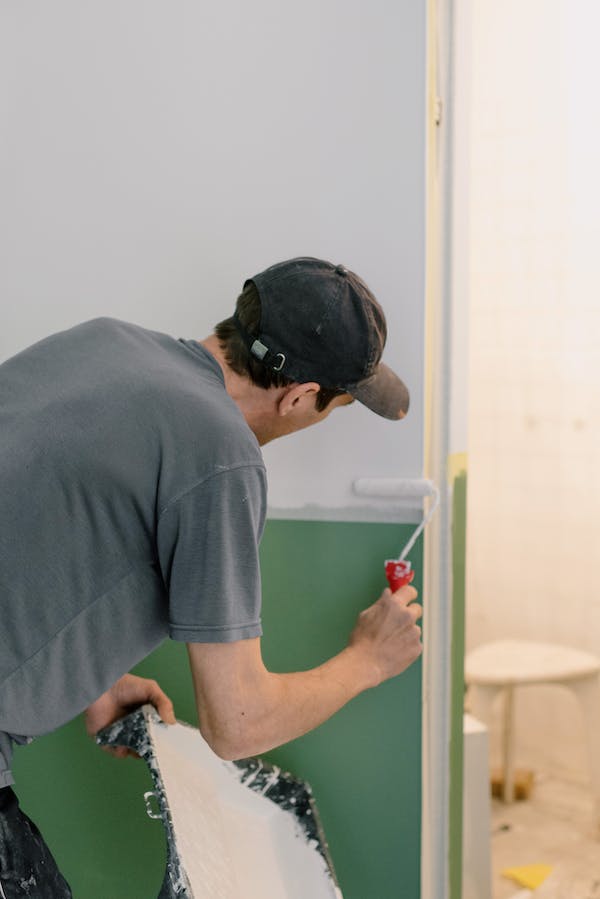How to Plan For Interior Home Painting
by siteadmin

Repainting the interior of a home is an expensive undertaking. To reduce the cost, it is important to plan ahead and choose a color that suits your style and needs.
To determine how many gallons of paint you need, multiply the total square footage by 400 (interior paint covers about 400 square feet per gallon). It is also wise to prepare furniture and other items prior to painting to save time and protect them from spills and spatters.
1. Identify the Areas to be Painted
Interior painting adds a pop of color, helps cover up blemishes, and gives the room a new look. It also protects walls today and keeps stains, cracks and moisture from damaging the surface in the future.
When choosing a painter, it's important to get referrals. Ask friends, family, co-workers and neighbors for recommendations. Make sure you know what their experience was like and what the overall cost was. Don't pay in advance; hold back payment until the job is done to your satisfaction.
Before your painter comes, move furniture to the center of the room or cover it with canvas drop cloths. Also, remove all outlet and light switch face plates and collect screws in zip-top bags to avoid losing them. Painters typically work on weekends, so buy your gallons of paint ahead of time to avoid the higher crowds at home-supply stores. Remember, one gallon of paint covers 400 square feet. Multiply the total wall area by this number and subtract areas for windows and doors to figure out how many gallons you need.
2. Measure the Area
The area that will be painted is one of the main factors that affects interior home painting cost. This is a good idea to determine before you begin so that you can get an accurate estimate from a professional local painter.
Start by measuring the length and width of each wall in your home, if necessary. Once you have the measurements, multiply them to get the square footage. Add up all the square footage for each wall to get the total wall area.
Next, subtract the areas of doors and windows from the total wall area. As a general rule, a door will take up about 20 square feet and a window will take up about 15 square feet. Finally, divide your total wall area by 400 (to convert square feet to gallons) to find out how many gallons of paint you will need.
Remember, if your walls are textured or are very dark in color, you may need to purchase more paint than if they were smooth.
3. Choose the Paint
The next step in interior home painting involves determining the best paint for your project. You’ll want to select a color that fits your room’s mood, function and style. For example, do you want the room to feel cozy and intimate or rich and dramatic? Color can create those feelings, as well as many other emotions.
If you have a particular shade in mind, be sure to choose a high-quality, smooth-flowing paint with good coverage (most painting jobs require two coats). You can also buy special primers to help your walls and trim look their best.
Finally, when choosing a paint sheen, remember that satin and eggshell finishes hide imperfections better while semi-gloss and gloss are great for high-traffic areas or rooms where there will be a lot of wiping down. You can also ask your local paint specialist to custom mix a shade for you, if necessary. They’ll be able to provide you with a sample that you can test at home on your wall.
4. Apply the Paint
Painting walls is one of the most cost-effective and easiest ways to freshen up a room. Choosing the right paint, however, is essential to the project's success. It is also important to properly prepare surfaces and finish off the project with a quality touch-up.
Begin by clearing the area and placing a tarp on the floor to protect floors and other furnishings. Next, clean the surface to be painted with sugar soap and a lint-free cloth. This is particularly important in corners and areas next to trim that are only reachable by brush or application pad, and will help you achieve a professional finish.
Be sure to use a high-quality roller frame and cover and apply several coats to ensure a smooth, even finish. If possible, choose low-odor or low-VOC paints, which are less likely to cause irritation in sensitive individuals. If odors do occur, they can be quickly eliminated with the proper ventilation. After the last coat, sand patched and rough areas for an even surface and vacuum or wipe away any dust or debris.
https://www.rodriguezpaintingnj.com/interior-painting-princeton
Repainting the interior of a home is an expensive undertaking. To reduce the cost, it is important to plan ahead and choose a color that suits your style and needs. To determine how many gallons of paint you need, multiply the total square footage by 400 (interior paint covers about 400 square feet per gallon).…
Recent Posts
- Sophisticated Exterior Painting Methods: Advice for a Perfect Coat
- Lou’s Painting Company Sets New Standard for “Above and Beyond” Painting Services
- Supreme Coats Painting and Epoxy: Redefining Home Painting in Lapeer, Oxford, and Lake Orion
- Exploring the Drawbacks of Duct Cleaning: Insights from Air Vent Cleaning Charlotte
- Overland Park KS Painters Provides Insight: Essential Questions to Ask Your House Painter
